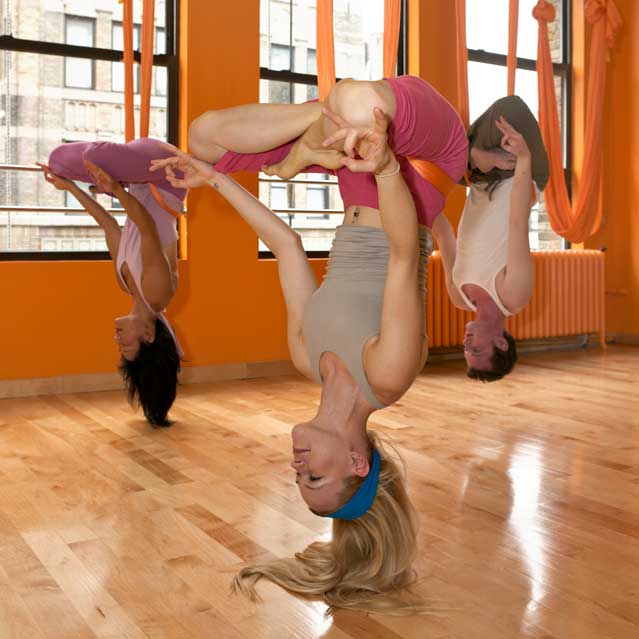The fitness world has seen plenty of crazes, but is one of the oddest. Created in 2007 by world-class gymnast Christopher Harrison, the workout takes place a few feet above the ground inside a silk hammock. Sound a little too West Palm Beach and wheat grass for you? Harrison swears by the spine and hip stretching techniques, especially for runners and cyclists. Proponents claim that balancing on the swinging silk enhances abdominal workouts and encourages your body to stretch that extra inch. Still sound too gimmicky? We called Harrison for a little bit more background.
How did AntiGravity yoga begin?
AntiGravity is actually an acrobatic performance troupe, and early on we went to India to do the opening number for the Miss India pageant. I wasn’t able to perform because my body was beat up, but while I was there I discovered yoga. Later, we had a retreat at Club Med, and they had a gazebo with eight hammocks that we all played on and made up these cool flips. We put a similar thing up in our gym and found that hanging upside down for a minute would take all the kinks out.
What is an AntiGravity class like?
First off, when you come into class, they measure the hammock exactly for your body, to allow you to evenly distribute your weight between the hammock and the floor. We start with a sun salutation from yoga, go through a conditioning and upper-body strength section, and a core workout. At the end of the class we do some inversions, handstands, and the skydiver (where you are hanging upside down from your legs).
Why are the inversions so important?
When you hang upside down you decompress your spinal column, allowing space to open in between each vertebra, hydrating each disk. If anything is pinched, it gets space. The movements are designed to work on joint mobility, making your spine more flexible. The cheetah is the fastest animal in the world because of its ability to move its spine in both directions. So what we are doing is creating more space in our spine and more mobility in our joints, which, for an athlete, makes you faster.
How else can this benefit the regular athlete?
If you want to stay free from injury, you want to have equal balance with strength and flexibility. Cyclists have really tight hips, especially cyclists who work at a day job where they are sitting in front of a computer. Cyclists who take the yoga class find that it is the best hip-opening technique. There are hip-opening positions you can do on the hammock you would never be able to do any other way, because of the fact you are hanging upside down to do them. Gravity is actually helping open up your hips.
How difficult is it to succeed at hanging upside down in an AntiGravity yoga class?
It’s a lot easier than it looks. We have the regular housewives club, and I’ve got a group of flipping grannies from Halifax, Nova Scotia, who are all doing the class. I have housewives in Ireland who are blowing everyone’s mind with the cardio that they do.
Why not just use gravity boots?
The problem with those is they put tension in your ankles. For AntiGravity yoga you hang from your hips, which is where your spine starts. That allows your spine to decompress and align.
Any unusual perks?
We are doing research on this now, but some people have found themselves an inch taller from the class.


